Companies are spending nearly $95 billion (combined) on Facebook and Instagram ads annually. Unless you’re living under a rock, you could probably guess the reason for all that social media spending.
More than half the world is on social media, but only about ‘a handful’ are your audience. It’s relatively easy to get new followers, but the real challenge lies in converting your audience to paying customers.
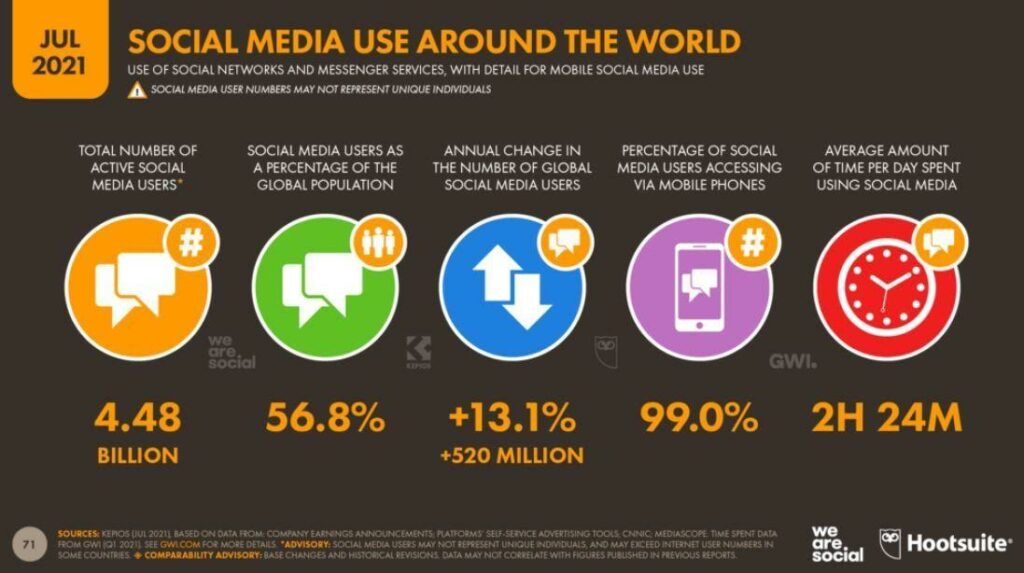
Social media campaigns can get your engagement rates sky-high, but they can also convert your audience to paying customers. Strategy and marketing tactics aside, you’ll need good social media landing pages to impress your audience and get them to do your desired actions.
This article will take a deep dive into creating social media landing pages that improve your brand’s conversion rates. Let’s get started.
In this article
What is a social media landing page?
At its minimum, a landing page is a simple page on a website where visitors land to take specific actions. Depending on your reason for creating one, a landing page could be a lead capture for marketing funnels or a linking page to an eCommerce store.
A social media landing page, however, is the destination page for specific social media marketing campaigns.
Compared to website landing pages, your social media followers, well, land on this page when they click paid or organic promotional links on a social media account or ad. These landing pages often have simple layouts and clear call-to-actions — think: “Shop Now,” “Buy Now,” “Send a Message.”
Because of this, it’s easy to customize them for specific campaigns with simple yet specific instructions on social media.
Here’s a typical example from Cold Stone Creamery’s Instagram bio.
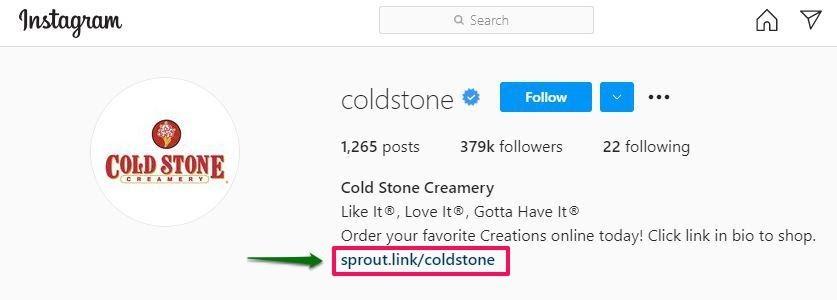
Cold Stone Creamery’s organic promotional link transfers visitors to a landing page with a specific call to action: “Order Online!”
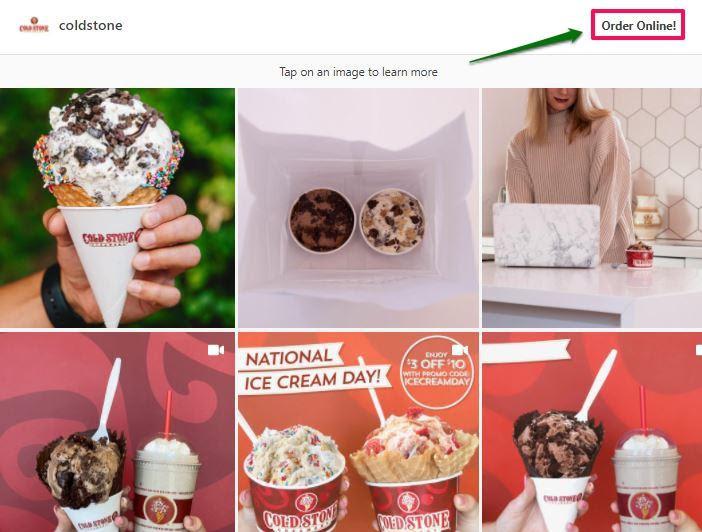
Because there’s only one call to action, landing page visitors tend to focus on it and are more likely to take the action you desire. This drives up click-through rates and increases the chances of conversion.
The example above shows how social media landing pages work. Now, let’s get into the nitty-gritty of how you can create high-converting landing pages for your next social media campaign.
How to create a winning social media landing page?
While you have creative freedom when it comes to crafting social media landing pages, there are a few best practices that marketers follow. Here are some social media landing page building tips you can use:
1. Have a strong call-to-action (CTA)
Your visitor has made an effort to click through to your landing page. It’s up to you to give them specific instructions next so they don’t second guess their next course of action.
Aim for clear, concise, and compelling CTAs. Check out the example from Dear Klairs’ Instagram ad landing page sample below.

The message on this social media landing page is clear: “Shop Now.” It also has a minimalist design without distracting images or words, enabling customers to click just one button: the one that takes them to Dear Klairs’ ecommerce store.
That said, it’s best to stick to one CTA per landing page. Landing pages with more than one CTA button have an average conversion rate of 11.9 percent, compared to 13.5 percent of those with one CTA link.
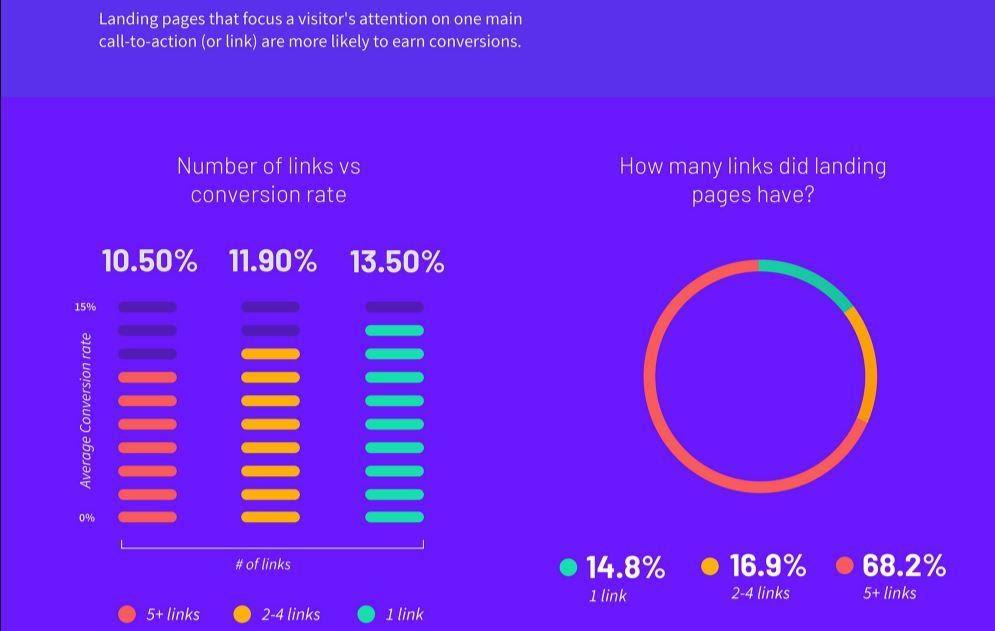
Moreover, ensure your headline is just as persuasive and clear as the CTA. For example, if you want visitors to purchase your products, consider “Buy Now” or “Shop Now.” If you need to send them to a subcategory of your ecommerce shop, then use “See More.” Simple CTA techniques like these will result in drastic improvements in your click-through rates.
The goal here is to get more conversions with fewer words in record time. Nevertheless, if your headline and CTA are vague or don’t compliment each other, you’ll leave your visitors confused, and they might leave without performing an action.
2. Keep fewer elements on the page
Whether it’s architecture, writing, or web design, one thing is true for different kinds of art: Less is more. Landing pages are no exception. Social media platforms have a lot going on at once, so your landing page should stand out from the noise by being clean and straightforward.
Declutter the page by getting rid of clashing colors, lengthy (and otherwise unhelpful) copy, website menus, social share buttons, and other things that might bombard your visitors with unnecessary information.
The most successful landing pages I’ve seen stick to the following basic elements:
- Product name: This should include the name of the company and the specific product/s you’re promoting.
- Description: Write a brief copy with enough information to motivate visitors to make a purchase or other actions.
- Product photos: Use just a few quality images that show your product in action.
- Social proof: Show review and testimonials of customers where necessary.
- CTA: Give the final instruction to spur action.
Your landing pages’ color schemes must be consistent with your branding and allow you to create a clean look. Check out this simple social media landing page by Woorise.
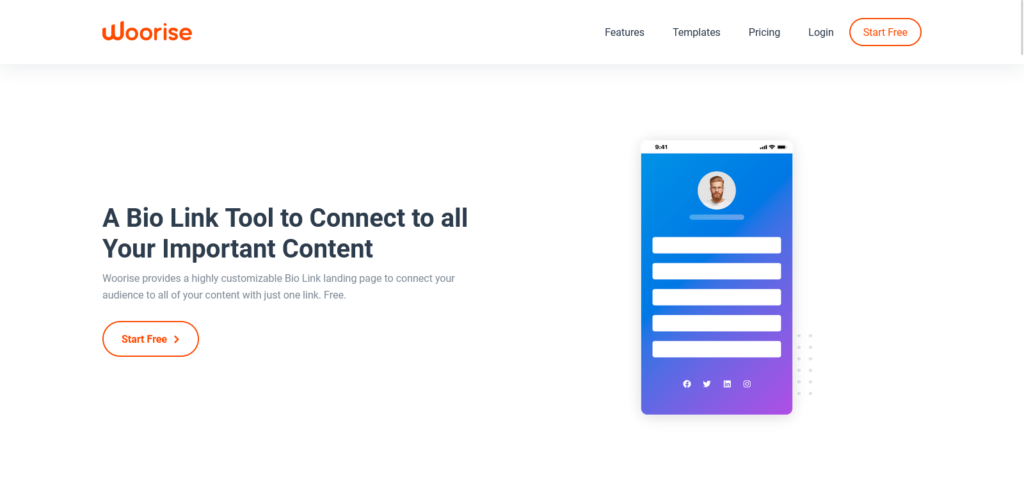
You will notice that the landing page above shows the logo, a photo of a bio link page and a strong and prominent headline. While there are two CTA buttons (one at the top right and another at the bottom), they lead to the same page. Clean and simple landing pages like the one above keep your visitors on the right track and convince them to click through to your product or event page.
3. Make it mobile-friendly
Nine out of ten internet users interact on social networks via mobile, which implies that a large proportion of them also visit landing pages using mobile devices. It only makes sense that you optimize your social media landing pages for them as a necessity, not an afterthought.
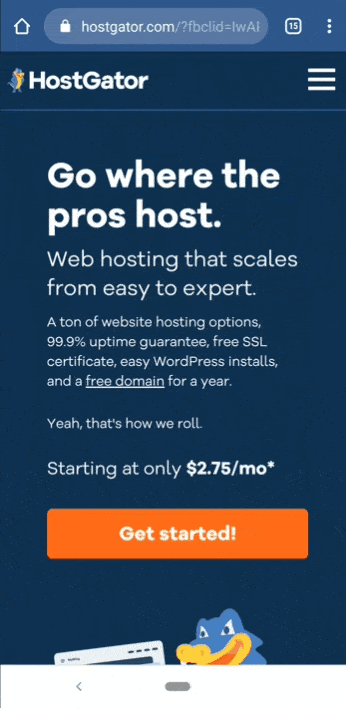
Taking a cue from HostGator’s mobile landing page, all their elements are accessible on a phone screen. Visitors can see all the elements or features of the landing page, including the CTA, without having to scroll down. The page above uses responsive design, which allows it to adjust to any type of browser or screen size automatically.
Aside from using responsive design, your social media landing page should use fonts that are available to mobile devices. You also need to reduce the number of images or resize them to help the page load quickly.
4. Use consistent messaging
Users have expectations whenever they interact with a business on social media. When you throw them off by being inconsistent with your brand voice, identity, and messaging, their expectation of you drops.
We’ll put this into perspective with a sample from Soko Glam on Instagram.
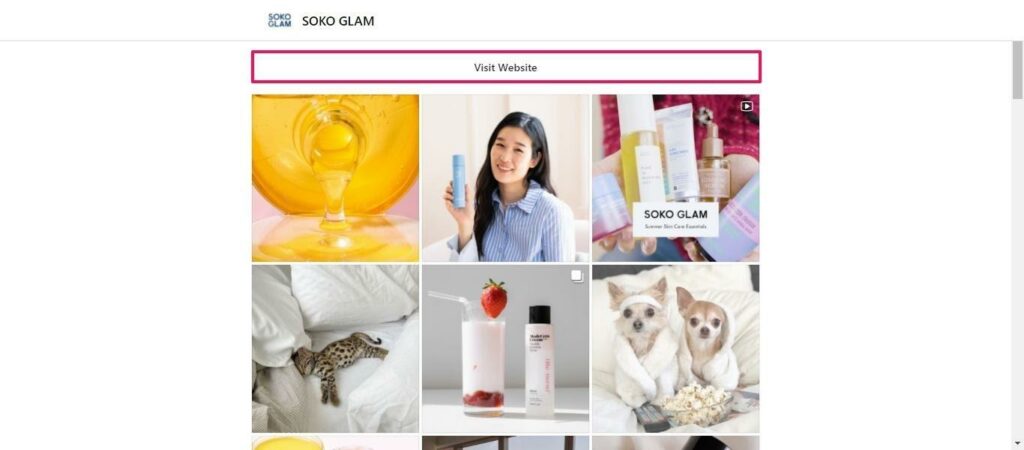
We got to this page by clicking the link on their Instagram bio. You’ll notice that they’ve stayed consistent with their color palettes by using the same photos as on their social media page. However, if Soko Glam used a weird color palette like a purple background, it might turn off potential customers who might think it’s a scam of some sort.
Aside from being consistent with your branding, you also need to write compelling copy that’s consistent with what you promised on your social media account. If your social media post promoted discounts or bonus items, your landing page should reflect the same promotions. Otherwise, users will go away believing that you just tried to rip them off.
5. Test your landing page
Test, optimize, adapt and test again. Don’t be afraid to do this till you find the perfect landing page formula for your social media campaigns.
Social media is constantly evolving, and your social media landing pages need to keep up with the change. To find what works for your social media landing page, you must monitor and perform several A/B tests.
A/B testing refers to a set of tests where you change one landing page element at a time and compare their performance with that of the existing landing page. For example, you can change either the color of the CTA or the copy inside the CTA button, but not both at the same time. This allows you to isolate the element that needs to change for your landing page to perform better.
Testing one element at a time sounds tedious. However, it will allow you to create landing pages that are optimized for maximum conversions.
Why do you need a social media landing page?
Social media landing pages boost your chances of conversion. By directing your audience to campaign-specific landing pages — instead of general destinations like your company’s homepage — you shoot up conversions by 27 percent.
That said, there are various reasons why landing pages are vital components of social media marketing campaigns. We’ll discuss them in a bit.
Brand Awareness
When done correctly, social media landing pages increase awareness for your brand. Not just through paid campaigns but also organic click-throughs. For instance, clicking on Skullcandy’s Instagram bio leads to this bio link landing page:
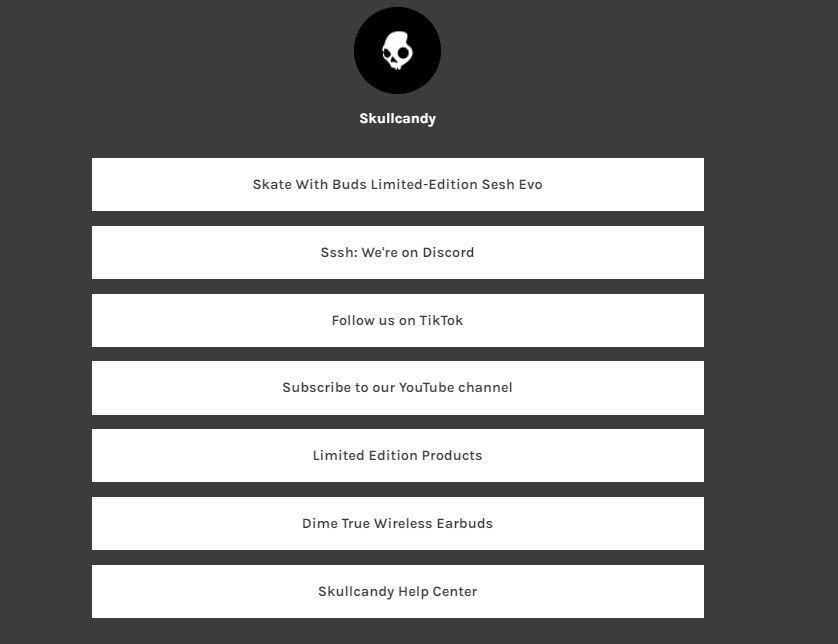
As you can see, it directs visitors to a curated social media landing page with links to their Discord channel, TikTok, YouTube, and eCommerce products. This doesn’t just help Skullcandy promote their products, but also gives their other social channels some extra exposure.
Product trials and demos
If your company develops or manufactures products for their eCommerce store, then getting people to beta test or do a product demo is pretty much standard practice. Your landing page can get visitors to click through, sign up, and get started immediately. Like this example here:
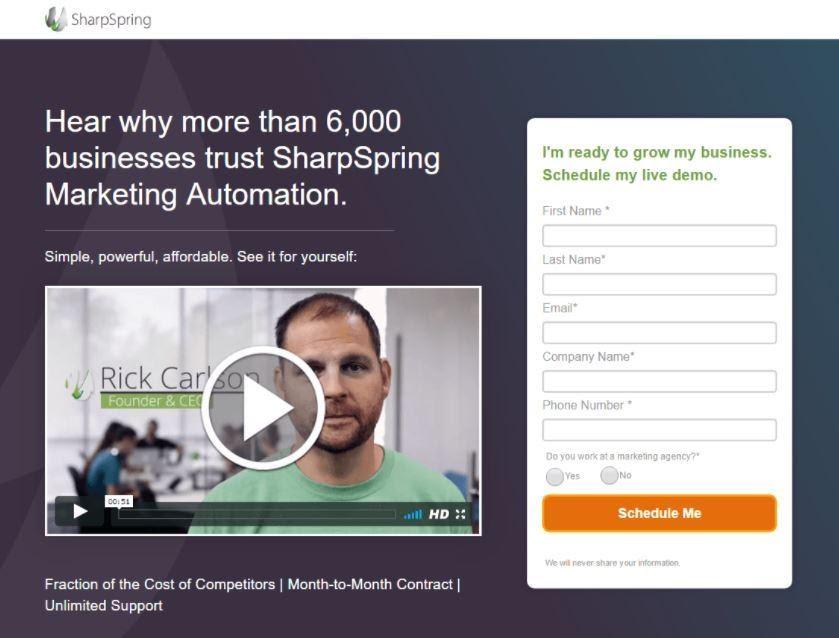
The SharpSpring demo page follows landing page best practices by being simple and having a straightforward call-to-action. Social media landing pages are an efficient way to put the word out about this new product and have new users try it out.
A landing page is also an effective method of getting potential customers’ contact details for future marketing campaigns and segmenting them according to industry. In the example above, SharpSpring asks whether the user works at a marketing agency.
This short question will help SharpSpring’s email marketing team send relevant content in the form of newsletters or promotions. We will discuss this method in greater detail in the next section.
Lead Capture and Generation
You’ll need landing pages to capture or generate leads via social media. You can do this when you ask for customer information before they sign up for a free event or webinar.
See this landing page example by Ontraport. Notice that A and B are different pages? This is because the first page (A) takes visitors to the next page (B). However, visitors must fill in their information to download a gated content — the buyer’s guide.
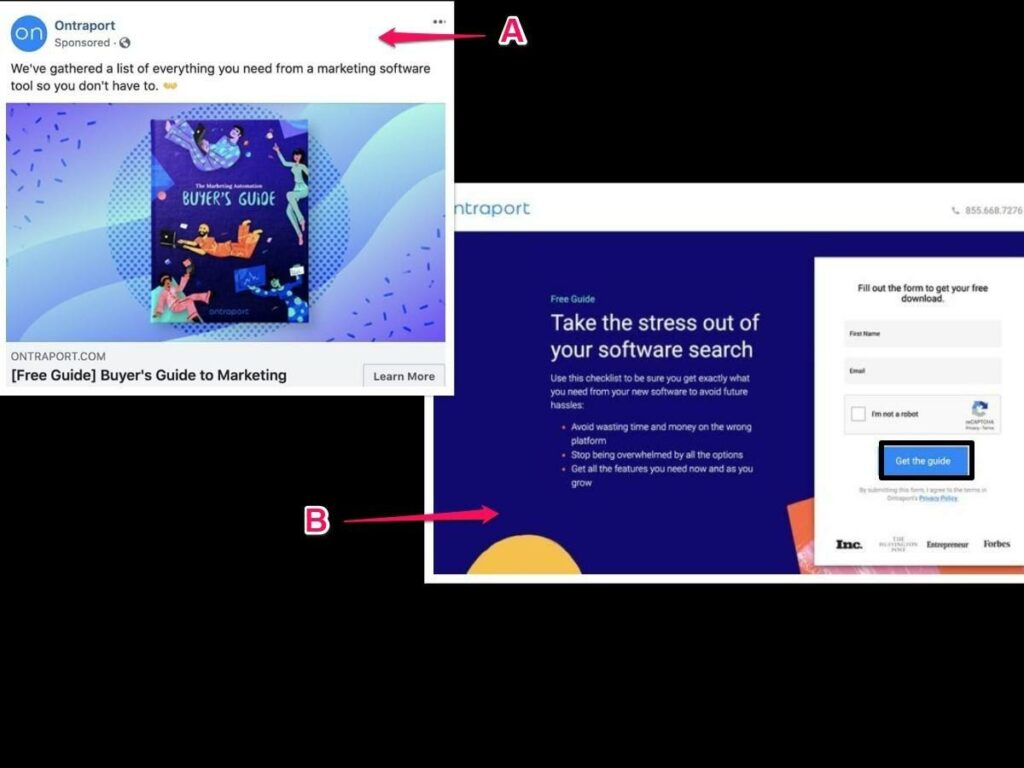
The good thing about this is you can link this funnel to your marketing funnel and send the generated leads to your sales team. In addition, linking your social media landing page to a marketing funnel will help determine the success of your campaign and show you verticals to improve on in the next marketing campaign.
Hult International Business School uses a special-edition Monopoly board game as a lead magnet:
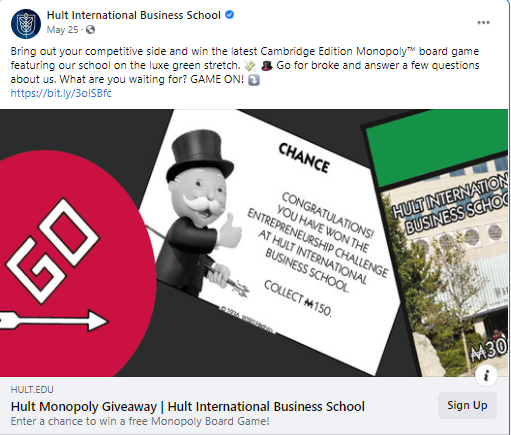
When the user clicks on “Sign Up”, they get directed to the quiz below:
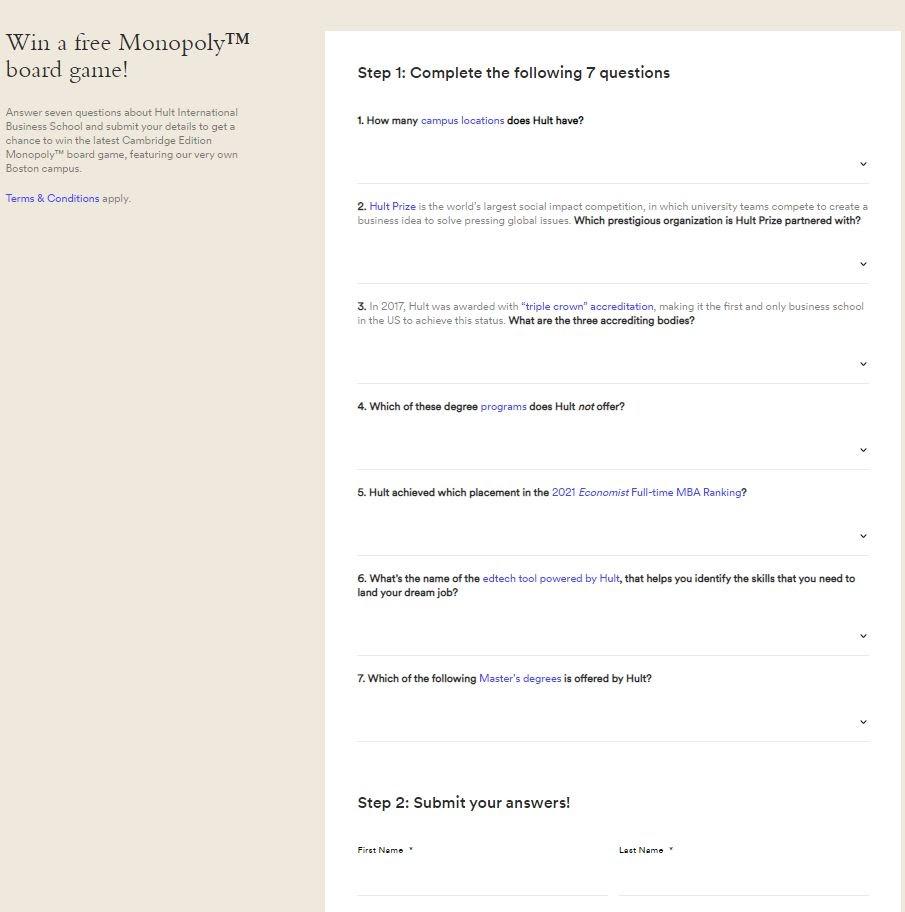
The quiz gauges the user’s awareness of the brand and allows Hult to collect the user’s contact details and location. Hult then uses this data to determine the type of content that it will send to the user.
For instance, if the lead does not know much about Hult, the school’s marketing team will send introductory content. If the answers indicate that the lead is already aware of the school, Hult will then send content that seeks to convince the reader that its MBA program is the right one for them.
In Closing
Social media landing pages drive targeted traffic or visitors to conversion, making them essential for a successful social media campaign. But it’s not enough to just whip up any kind of landing page; you’ll need to strategize, test, and optimize these pages to see what works best.
Ideally, an excellent social media landing page is clean, simple, and concise. It has the necessary information without going over the top. Be brief, focused, and use a compelling to drive conversions towards your goal.
Follow our actionable steps in this guide to take your social media campaigns to the next level.



